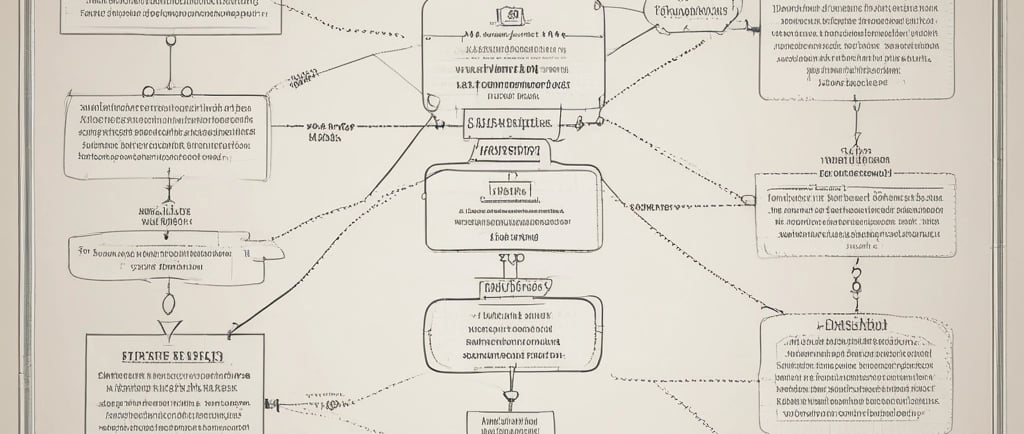Patentability Insights: A Practical Framework for Innovators
A simple lay man explanation for understanding novelty and inventive step in the patent registration process.
INNOVATION


Patentability Insights: A Practical Framework for Innovators
Simple, layman-friendly explanation:
Patentability is one of the most crucial aspects of intellectual property law. For inventors and innovators, understanding what makes an idea patentable is essential to ensure their efforts receive rightful protection. This article explains patentability in a structured way, using step-by-step illustrations and simplified pseudo-code examples to make the concepts easier to grasp.
Novelty Assessment
Novelty is the foundation of patentability. For an invention to be patentable, it must be new when compared to prior art. Novelty is usually assessed differently for processes/methods and systems/ apparatuses.
1. Novelty in Methods/Processes
The novelty of a process is judged by examining the inventor’s disclosure carefully and checking whether the specific sequence of discrete steps exists in prior art.
If the exact sequence already exists in earlier documents, the invention lacks novelty.
If even a small incremental change or an additional step is introduced that does not appear in prior art, the process may be considered novel.
Example: Incremental Method Changes
Case 1: Suppose a method involves steps A, B, and C. If a prior document (D1) already discloses A, B, and C, the claim is not novel.
Case 2: If the inventor modifies step A into A+a1+a2 (small additions), and no prior document discloses this modified step, the claim may now be considered novel.
Case 3: Over time, the same method evolves with further changes (like B+b1+b2+b3, C+c1+c2). Even if another prior art (D2) partially overlaps, the new combination of discrete modifications may still qualify as novel.
Case 4: If a completely new step D is introduced (e.g., to enable better heat dissipation in a microcontroller), the invention remains novel since the purpose and scope differ from prior art.
2. Novelty in Systems/Apparatuses
For systems, novelty lies in how components are arranged and interconnected. Even if the components themselves are known, a new configuration or interaction between them can lead to novelty.
Example: System Interlinking
Understanding Patentability in Simple Words
When we talk about patentability, two important aspects come up again and again:
Novelty – Is the invention new compared to what already exists?
Inventive Step – Does the invention involve something non-obvious that an ordinary expert in the field wouldn’t easily come up with?
The file you shared focuses on novelty in systems (like machines, devices, or apparatuses), and it explains this with examples.
How Novelty is Judged in Systems
Every system or device is made up of components that work together. If you change the way components are linked or how they interact, the overall functioning of the system also changes.
This means:
Even if the components (say, A, B, C) are already known,
The invention may still be considered novel (new) if the way they are connected or work together is different.
Example 1: Change in Interlinking
Suppose an inventor designs an electric engine with components A, B, and C.
In this invention, component A connects to B in one way (called int2), and A and B connect with C in another way (called int3).
Together, these connections define how the engine works (intfc1).
Now, if we find a previous invention (prior art) that also has A, B, and C but connected differently (say, int4 and int5), then:
The new invention can still be considered novel, because the way the parts interact and function is different.
Example 2: Adding a New Component
The same inventor later adds a new component D to the engine.
Now the system has A, B, C, and D, with new interlinking (int6) and new functioning (intfc3).
If prior art only shows an engine with A, B, and C, then:
The invention with component D is considered novel, because a new part and new interaction have been introduced.
Also, the purpose of the invention might change. For example, adding D could help the engine dissipate heat better, giving it a new technical benefit.
Key Takeaway
Novelty doesn’t always mean new components.
Even the same parts (A, B, C) arranged or connected differently can make an invention patentable.Adding a new component or step (like D) often strengthens novelty, especially if it solves a new problem or adds a new function.
In simple terms:
👉 A system can be patentable not only when it has new parts but also when the same parts are used in a new way.
Inventive Step Assessment
Novelty alone is not enough. A patentable invention must also involve an inventive step—it should not be obvious to a person skilled in the art.
What is an "Inventive Step"?
For an invention to get a patent, it’s not enough that it is new (novel).
It must also have an inventive step – meaning it should not be something that any ordinary expert in the field could easily come up with by just combining existing knowledge.
Example to Understand
Case 1: Just Combining Existing Ideas
Imagine someone invents a method for translating an idea into another language with three steps:
Step A
Step B
Step C
Now, when we search for earlier work (called prior art):
Document D1 already shows Steps A and B.
Document D2 already shows Step C.
If you put them together, you basically get the new invention.
👉 But this is not inventive – because the inventor just combined two existing ideas without adding anything extra.
Case 2: Adding Something Extra (Inventive Step Present)
Now suppose the inventor modifies the method slightly:
Step A is not just “A” anymore; it becomes A + a1 + a2 (two new mini-steps added).
Steps B and C stay the same.
When we compare with the earlier documents (D1 and D2):
D1 still has A and B, but not A+a1+a2.
D2 still has C.
👉 Here, the invention is likely inventive because:
The extra mini-steps (a1 and a2) in Step A change how the entire process works.
These changes may also affect how Step B and Step C interact.
This shows technical advancement, not just a simple combination of old ideas.
In Everyday Words
Think of it like cooking:
If Recipe D1 gives you rice and salt and Recipe D2 gives you curry, and you just put them on the same plate – that’s obvious, not inventive.
But if you add a new spice blend to the rice (a1, a2), and it changes the flavor of the whole dish when combined with the curry – now that’s something new and inventive!
✅ Bottom Line:
Just joining old ideas = not inventive.
Adding meaningful new changes that improve how the whole thing works = inventive step.
Key Takeaways
Novelty is about whether an idea or sequence of steps/components has ever been disclosed before.
Inventive step ensures that the improvement is not obvious to an expert in the field.
Even incremental modifications, if technically significant, can make a claim both novel and inventive.
Patentability must always be assessed holistically—examining the invention in its entirety rather than focusing on isolated elements.
Conclusion
Patentability in discrete steps can be understood better by breaking it into novelty and inventive step assessments. Whether it’s a process or a system, each incremental change, interlinking of components, or new step must be evaluated against prior art to determine its uniqueness and inventive merit.
By carefully analyzing these parameters, inventors can strengthen their chances of securing patents and ensuring their innovations are recognized as genuine contributions to technology.
Disclaimer
The information provided in this blog is for general educational purposes only and does not constitute legal advice. Patent laws vary by jurisdiction, and outcomes depend on the specific facts of each case. Readers are encouraged to consult a qualified patent attorney or intellectual property professional before making any decisions related to patenting embedded systems, AI, or ML-based inventions.
